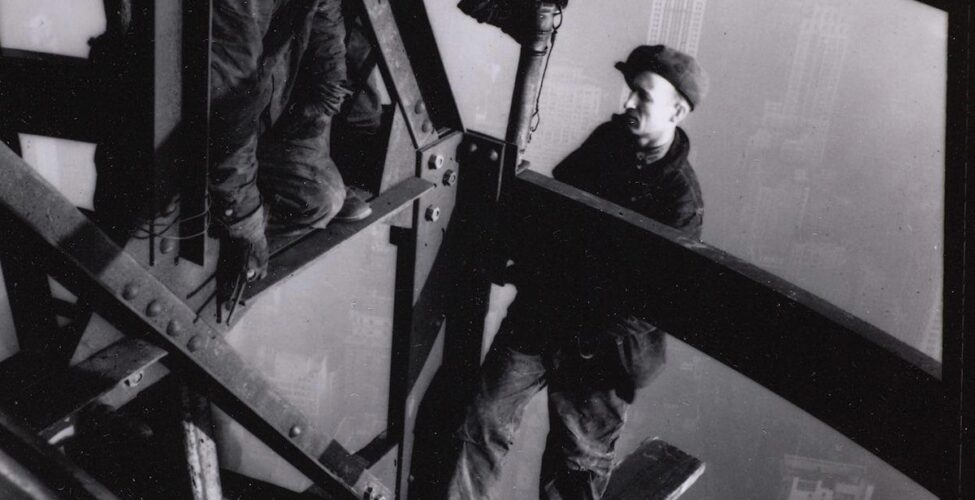“This photograph, made nearly 1,240 feet above the busy streets of midtown Manhattan, depicts steelworkers assembling the Empire State Building’s mooring mast—the top of the skyscraper that was originally meant to be a loading point for dirigible passengers. It is an ideal image to consider on #LaborDay, a federal holiday honoring workers and the results of their efforts. A feat of modern engineering and dedicated labor, the Empire State Building’s 102 floors were fully constructed and ready for occupancy in just 13 months. At the height of activity, nearly 5,000 workers swarmed the site on a single day, working together on many separate but interconnected projects.
Between May and November of 1930, photographer Lewis Hine documented the Empire State Building’s many bricklayers, riverters, engineers, and steelworkers with 4 × 5-inch and 5 × 7-inch cameras—all without safety equipment. He produced almost one thousand negatives during his six months on site. Most images celebrate the craft and skill of individual workers who came together during the Great Depression to produce the tallest building in the world. Hine was a lifelong champion of immigrant, child, and worker welfare and dignity. His photographs of the Empire State Building’s workers are considered some of the finest images of labor created during the twentieth century.”
—Julia Dolan, The Minor White Curator of Photography
Lewis W. Hine (American, 1874–1940). Top of the Mooring Mast, Empire State Building, 1930 (negative); printed later. Gelatin silver print. Bequest of Fae Heath Batten, 1997.58.75



